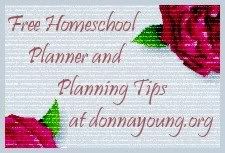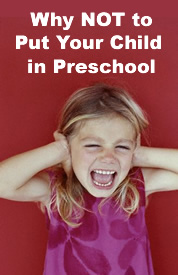Reading Aloud to Babies and Toddlers
Posted by homeschoolmentormom on April 1, 2012
Reading to our babies is one of the best things we can do to encourage their language development…and in the future, to help them love to read. The best time to start reading to babies is before their birth. Reading the same book to them everyday helps them become familiar with your voice and experience the rhythms of language. Once your baby is born, continue reading to him everyday, even if it seems he isn’t paying attention.
If you have missed this opportunity, don’t be discouraged. It’s never too late to start reading to your child! If you have a squirmy, resistant toddler, read on for suggestions.
Read to your child everyday, even if he doesn’t seem interested. Try to make reading fun—for toddlers, you can experiment with books to touch (like Pat the Bunny) and sturdy board books that don’t have many words. Most toddlers are interested in animals, so look for books about animal sounds. A perfect choice is Eric Carle’s The Very Busy Spider, which has textured pages to touch, and a simple text including animal sounds.
If your child continues to refuse to sit on your lap and listen to a book, try the following:
-Read to your child while he plays near you. Hold the book towards your child, so that if he looks at you, he can see the pictures. Don’t force your child to sit on your lap to listen to a book-we want books to be associated with positive experiences.
-Keep sturdy board books or cloth books in your toddler’s toy box, and stand books up near your baby when your lay him down for “tummy time”. They might get chewed on a little, but that’s ok. The idea is to help you child associate books with enjoyment. (Supervise chewers carefully!)
-Try reading to your child when he is tired and wants to cuddle-like right when he wakes up or right before bed.
-Try reading to your baby when she is in their “quiet-alert” stage. For older babies, this might mean right after a meal. For nursing babies who fall asleep after nursing, try reading to them after bath time, or right after a diaper change. Experiment—try reading several times during the day to find what works for you and your baby. Once you find a time that works, try to make it a habit.
-Choose the right book! Books for babies and toddlers should have bright, realistic illustrations (or photographs), simple, short sentences, and include rhyme and/or repetition. Books you can “sing” to baby are especially good choices.
-Some toddlers seem to need a sense of “control” in order to sit still for a book. In this instance, I usually let them have it (in moderation.) I let them turn pages, for example, ask them to point to things in the pictures, and so on. But I never let little ones grab, tear, or throw books. Toddlers must be taught to treat books carefully.
-Very squirmy toddlers might need a specially modified read aloud time for awhile: Don’t linger too long on the pages; shorten or skip text if you have to, or even just “talk” to them about the pictures in short sentences.
Other Tips:
-Don’t read in “baby talk”. Use real words and complete sentences. It is OK to use a sing-song, higher pitched voice, if it seems natural to you to do so.
-Encourage toddlers to chime in with repeated phrases or sounds when they can.
-Don’t worry about variety: It’s OK to read a few favorite books over and over for now. Babies and toddlers love repetition, and learn through it.
Here are some of our favorite books to read to babies and toddlers (in no particular order):
Brown Bear Brown Bear What Do You See, Bill Martin
Goodnight Moon; The Big Red Barn, Margaret Wise Brown
The Three Little Kittens, Paul Galdone
Five Little Monkeys Jumping on the Bed (board book), by Eileen Christelow
Ten In the Bed, by Penny Dale (out of print–from Discovery Toys–a ‘singable” book.)
Very Busy Spider, The, Eric Carle
Read-Aloud Bible Stories, by Ella Lindvall (Great first Bible stories with short sentences.)
Farm Animals, Baby’s Animal Friends, (chunky board books) by Phoebe Dunn (there are others in this series, by different author. These where my baby’s favorites.)
The Foot Book, Dr. Seuss (short sentences, lots of repetition.)
Wheels on the Bus, (a pudgy board book), by Jerry Smath (another singable book)
The Pudgy book of Mother Goose, by Richard Walz
Little Golden books, such as:
–The Animals of Famer Brown, Richard Scarry
–Old MacDonald Had a Farm, (there are several versons of this-they are all good, and fun to sing.)
–My First Book of Sounds, by Melanie Bellah and Kathy Wilburn
–The Jolly Barnyard, by Annie North Bedford and Tibor Gergely
© 2010, 2012 Susan Lemons all rights reserved.






Leave a comment